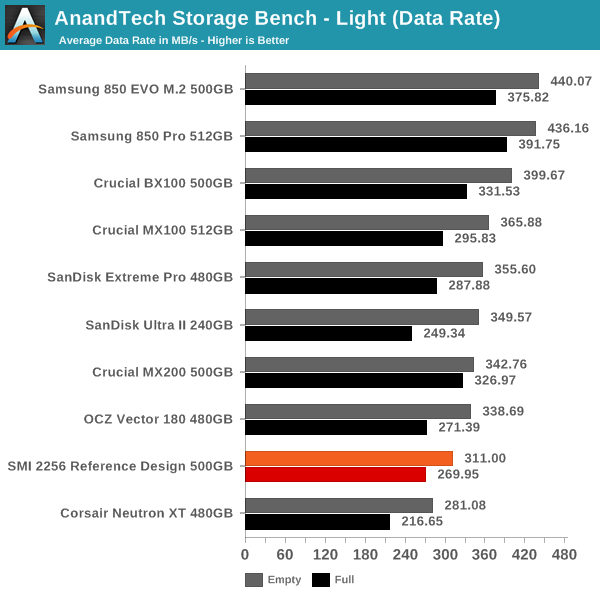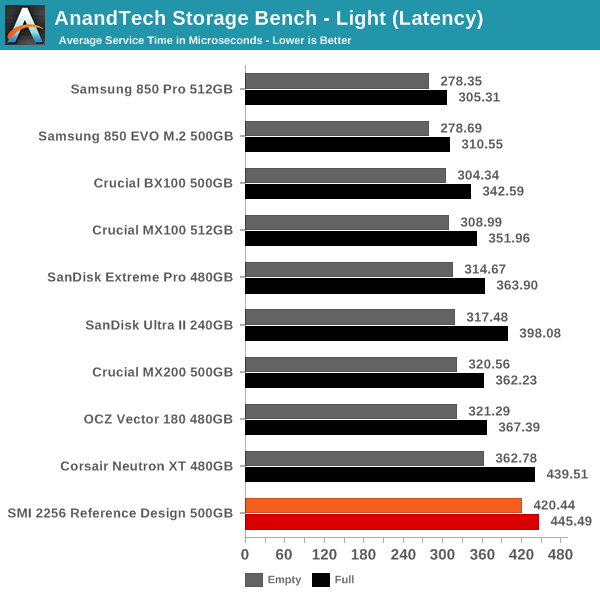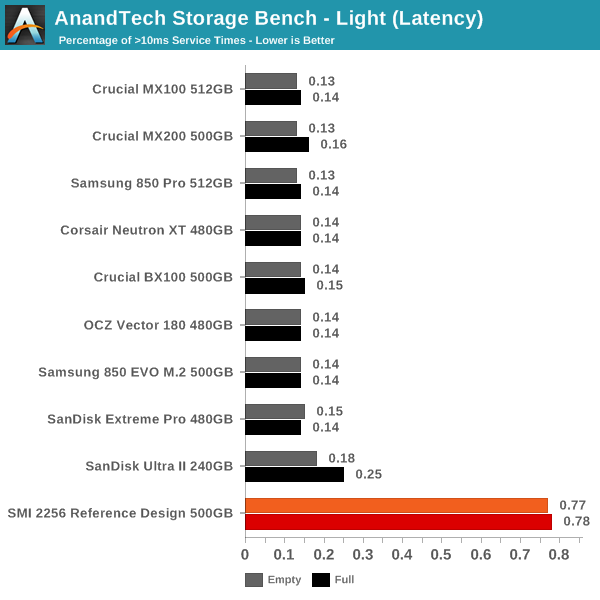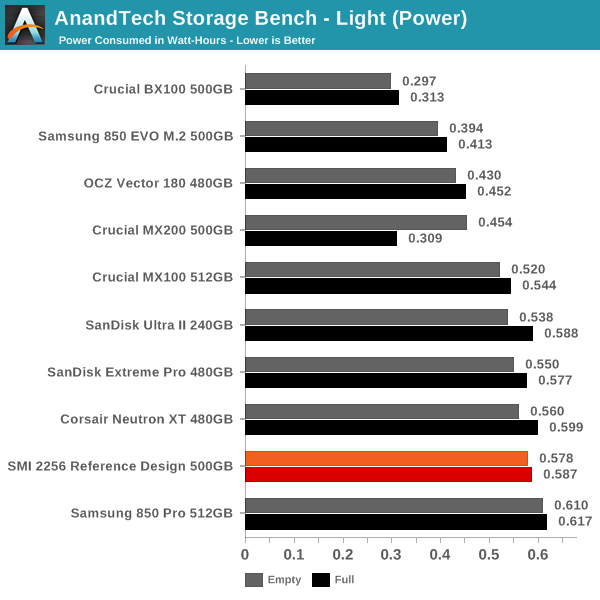Silicon Motion SM2256 SSD Controller Preview: TLC for Everyone
by Kristian Vättö on June 17, 2015 8:15 AM EST- Posted in
- Storage
- SSDs
- TLC
- Silicon Motion
- SM2256
AnandTech Storage Bench - Light
The Light trace is designed to be an accurate illustration of basic usage. It's basically a subset of the Heavy trace, but we've left out some workloads to reduce the writes and make it more read intensive in general. Please refer to this article for full details of the test.

In our Light suite, which is the most suitable test for the SMI 2256 and its target market, Silicon Motion manages to get closer to the competition. It's still not good for performance awards, but at least it's not significantly slower than the rest like in our more IO intensive trace tests.

The number of high latency IOs remains relatively high, though, and it's an area that I hope is fixed before retail drives ship.

Power consumption in light workloads appears to be better, although certainly not SM2246EN level.











34 Comments
View All Comments
Oxford Guy - Saturday, June 20, 2015 - link
Apple reportedly abandoned TLC because of the defects.serndipity - Saturday, June 20, 2015 - link
Have noticed that, as the NAND manufacturers shrunk the die process, issues with both MLC and TLC based SSDs have begun surfacing.Glad to see that Samsung, with its 3D NAND technology, used in the 850 PRO and 850 EVO, has been able to return to a much more stable process size (e.g. almost 3X that of current MLC).
viktorp - Thursday, July 2, 2015 - link
TLC NAND isn’t welcome at any price.Ask yourself simple question – what parts of your personal data will you trust to storage designed specifically to have 10 times less endurance than technology it is supposed to replace (MLC).
I am upset just thinking that someone thought of it as being a good idea.
cbjwthwm - Thursday, September 3, 2015 - link
The big problem here is a newer gen product at 2x the capacity of the equivalent architecture Sandisk Ultra II which for the most part gets outperformed by it. It would be interesting to see what the shipping firmware of this type of product eventually performed like compared to the reference design, but otherwise I see no reason to consider this vs the Marvell-based Ultra II.